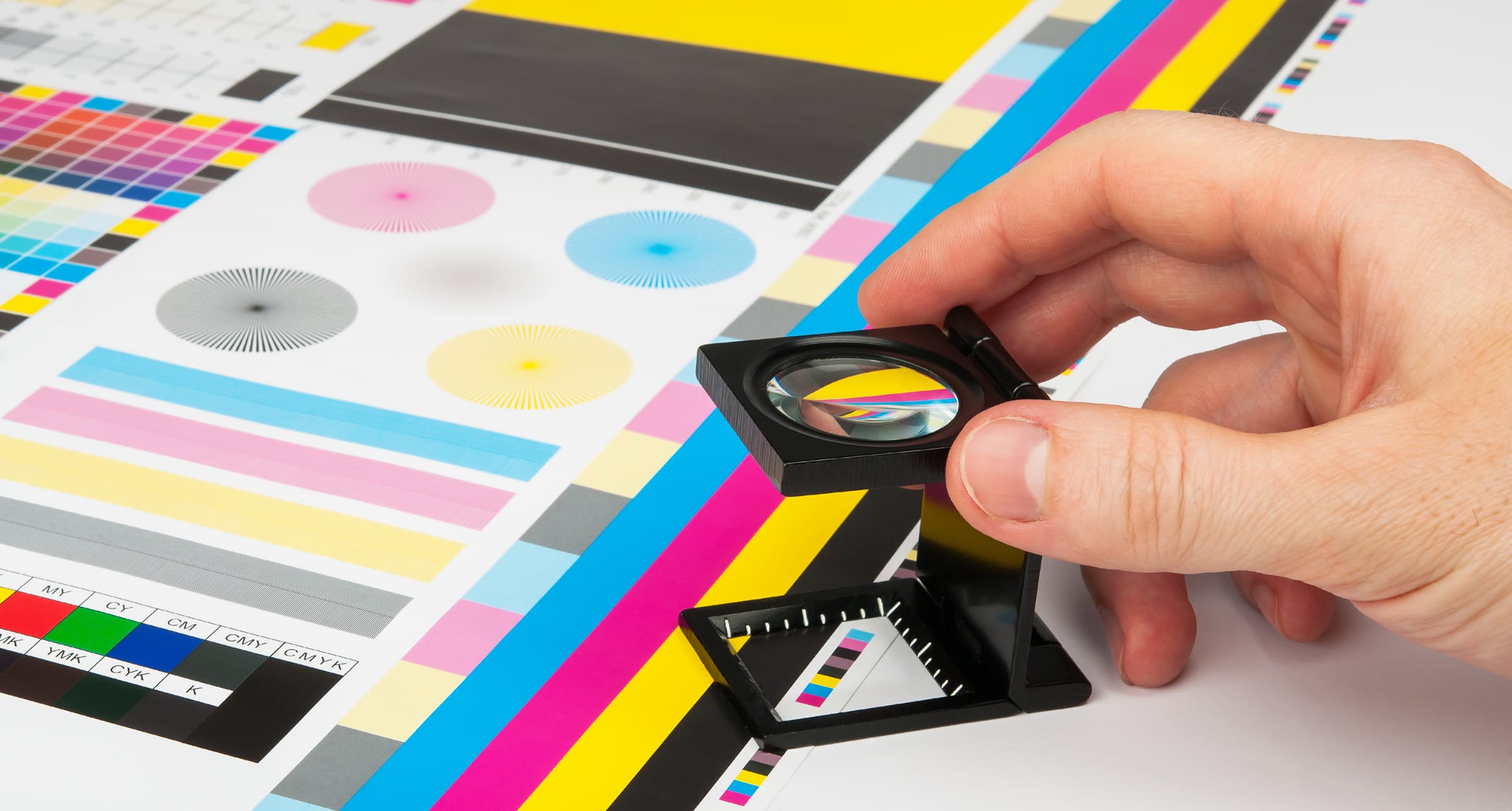If you’ve ever looked at a printing spec sheet, you may have seen the symbols 4/0, 4/4, 4/1, 1/1, and 1/0 listed on it. What does this printing jargon mean? Here’s an explanation of these printing jargon terms and tips for getting the best color resolution, whether you use color or black and white printing.
Printing Jargon — Let’s Start with the Numbers
When you talk about color printing, you’re referring to printing that uses four-color processing. Four-color printing means using the four primary colors of cyan, magenta, yellow, and black, symbolized by the anagram CMYK.
In four-color printing, these four base colors are used to create all the other colors. Properly blended, they create the gorgeous, richly colored pages of glossy magazines. They also reproduce beautiful black and white photography, paintings, and any images that require fully saturated colors.
Printing Jargon — 4/4
If you are asking for full color, you use the printing jargon symbol 4 to indicate a four-color process. Each number in the symbol indicates a specific page and the type of printing you want on it. The first number in the formula refers to the front side of the page, and the second number refers to the back side of the page.
Let’s use an example. If you want a publication with four-color printing on both sides of each page, you will mark it with printing jargon 4/4. This indicates that you want 4 and 4, which means four-color processing on both sides. Some printers use the term “4 over 4” to mean the same thing. Examples of 4/4 printing include brochures, catalogs, magazines, and illustrated books.
4/1
The printing jargon symbol 4/1, sometimes called “4 over 1,” means you want grayscale or black and white printing on one side and full color on the other side. The number 1 refers to black and white printing, which is also known as grayscale.
Why would you print in grayscale? It’s best for black and white images because this setting allows the printer to reproduce subtle, contrasting shades and details.
Technically, grayscale is any image that is made up of varying shades of gray. Photographers and publishers often use the term “black and white,” but printing professionals use grayscale to talk about the same images. The terms mean the same thing, but using the printing jargon word grayscale is more accurate.
When people talk about black and white printing, they are actually talking about grayscale. A truly black and white picture would literally only have two colors, namely, black and white. To get the varying shades of black and white you see in artwork and photography, you need shades of gray. That means grayscale printing.
Examples of 4/1 printing include art books that may have a color picture on one page and a black and white one on the other.
4/0
What about 4/0? As you may have figured out, that means you want full color on one page and no color on the other. This is also known as “4 over 0” to denote no printing on one side.
1/1
What about 1/1? This means that you want grayscale only on both side of the page
1/0
What about 1/0? This means means you want grayscale on one side of the page and no color on the other. This is also known as “1 over 0” to denote no printing on one side.
Printing Jargon Quick Chart
- 4/0: Full color on one side and no printing on the other
- 4/1: Full color on one side and grayscale on the other
- 4/4: Full color on both sides
- 1/1: Grayscale on both sides
- 1/0: Grayscale on one side and no printing on the other
How to Ensure the Best Results in Color Printing
No matter the project, you can get excellent results every time.
Ask Your Printer About Color Management
You select colors while working on your monitor, and you expect the final, printed result to look like the colors you see on your monitor. An exact match is not a realistic expectation, however, because digital screens often show you colors that won’t look the same way when they’re printed. Conversely, some colors you can print won’t display well on a computer monitor.
What is the answer? Ask your printing company about their color management process. This is the process they use to recreate colors as close to your chosen ones as possible.
Color management involves an in-depth understanding of digital and offset printing techniques. Good color management gives you predictable, accurate results that look very close to what you see on your screen.
Don’t Assume Black and White Printing Is More Affordable
You may think a small printing budget limits you to black and white processes. Color printing was once very expensive, but the costs have come down as digital technology has advanced. Today, it’s possible to get four-color printing at affordable rates.
Use Updated Software
Updated design software helps you produce high-quality images with excellent color production. If your design software is old, upgrade it to make sure you don’t miss any features that make color processing better than ever.
Choose the Right Paper
The right paper stock can make a huge difference in your print quality. Cheap, low-quality stock leads to bleeding and dull colors. Talk to your printer about the best paper for your project.
Talk to the Color Printing Experts
When you need beautiful, full-color books, magazines, brochures, or marketing materials, Dazzle Printing is here to help. Talk to us about all your printing needs, so you don’t have to worry about printing jargon.





